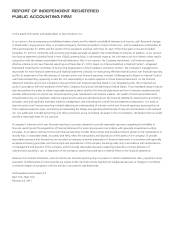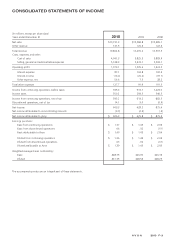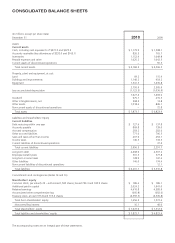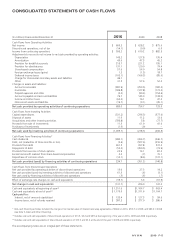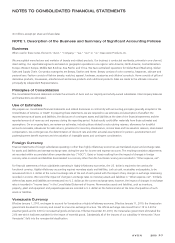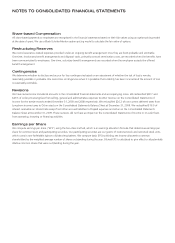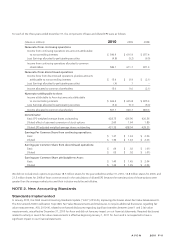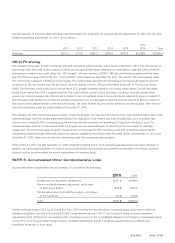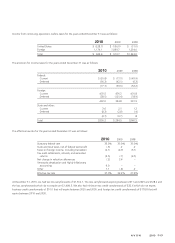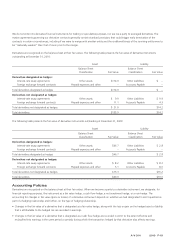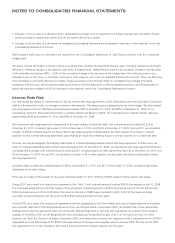Avon 2010 Annual Report Download - page 74
Download and view the complete annual report
Please find page 74 of the 2010 Avon annual report below. You can navigate through the pages in the report by either clicking on the pages listed below, or by using the keyword search tool below to find specific information within the annual report.NOTES TO CONSOLIDATED FINANCIAL STATEMENTS
Share-based Compensation
All share-based payments to employees are recognized in the financial statements based on their fair values using an option-pricing model
at the date of grant. We use a Black-Scholes-Merton option-pricing model to calculate the fair value of options.
Restructuring Reserves
We record severance-related expenses provided under an ongoing benefit arrangement once they are both probable and estimable.
One-time, involuntary benefit arrangements and disposal costs, primarily contract termination costs, are recorded when the benefits have
been communicated to employees. One-time, voluntary benefit arrangements are recorded when the employee accepts the offered
benefit arrangement.
Contingencies
We determine whether to disclose and accrue for loss contingencies based on an assessment of whether the risk of loss is remote,
reasonably possible or probable. We record loss contingencies when it is probable that a liability has been incurred and the amount of loss
is reasonably estimable.
Revisions
We have revised some immaterial amounts in the consolidated financial statements and accompanying notes. We reclassified $30.7 and
$29.3 of order processing fees from selling, general and administrative expenses to other revenue on the Consolidated Statements of
Income for the twelve months ended December 31, 2009 and 2008 respectively. We reclassified $26.2 of non-current deferred taxes from
Long-term income taxes to Other assets on the Consolidated Statements Balance Sheet at December 31, 2009. We reclassified $16.9 of
interest receivable on interest rate swaps from other accrued liabilities to Prepaid expenses and other on the Consolidated Statements
Balance Sheet at December 31, 2009. These revisions did not have an impact on the Consolidated Statements of Income or on cash flows
from operating, investing or financing activities.
Earnings per Share
We compute earnings per share (“EPS”) using the two-class method, which is an earnings allocation formula that determines earnings per
share for common stock and participating securities. Our participating securities are our grants of restricted stock and restricted stock units,
which contain non-forfeitable rights to dividend equivalents. We compute basic EPS by dividing net income allocated to common
shareholders by the weighted-average number of shares outstanding during the year. Diluted EPS is calculated to give effect to all potentially
dilutive common shares that were outstanding during the year.




